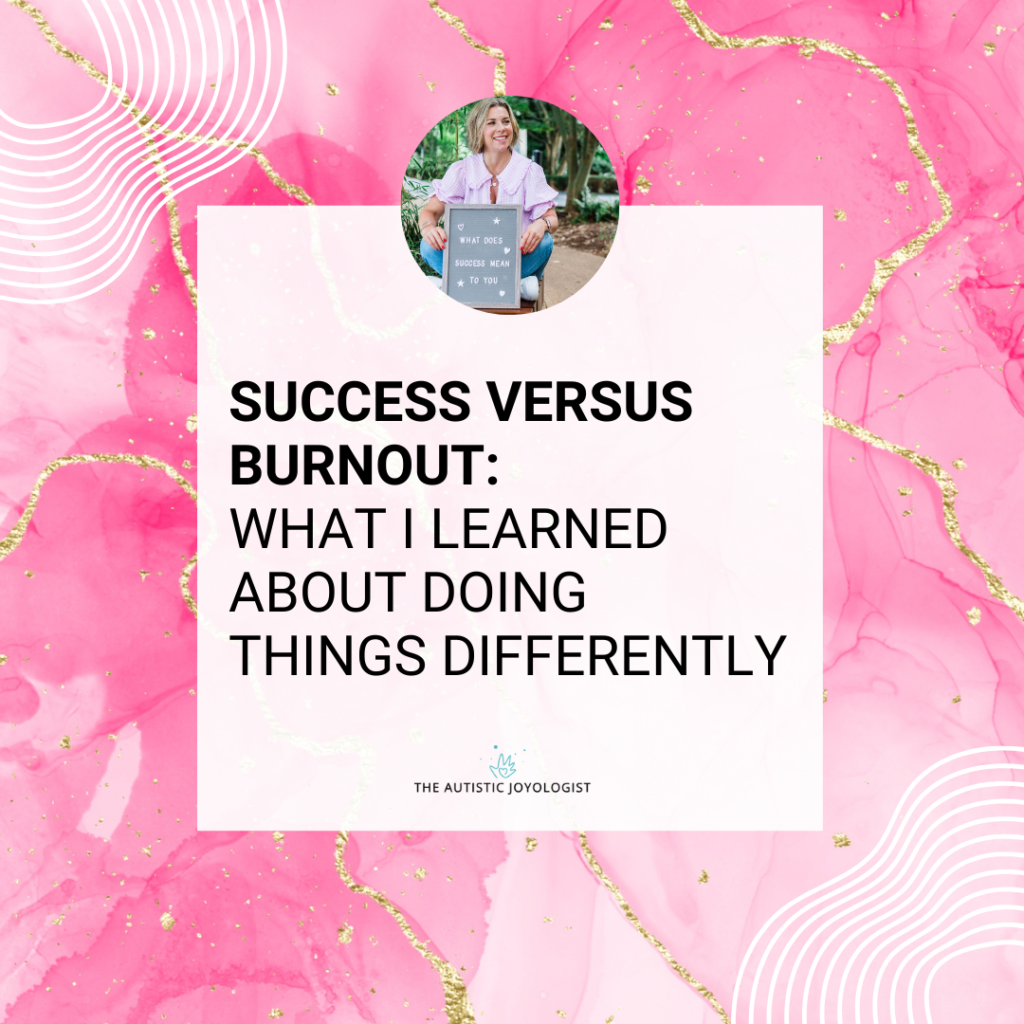
I used to think success meant doing everything perfectly, staying in control at all times, and never daring to say no.
But over time, I discovered that wasn’t success at all—it was burnout.
I know firsthand what it feels like to live in a state of constant overwhelm and burnout, always putting others’ needs first, stretching myself too thin, and grappling with the constant feeling that I was falling short of the impossible standards I’d set for myself. I also know the experience of feeling like I didn’t quite fit in, a sense of never belonging and being misunderstood. Living with the weight of shame and the thought that I wasn’t “good enough” became an all-too-familiar feeling.
But I came to realise that the true act of self-care and self-respect lies in creating a life that is calm, fulfilling, and balanced—a life I can genuinely enjoy.
Moving from the constant rush and pressure to a life of balance has transformed everything. Now, my life feels fulfilling and peaceful, and I know that’s my true definition of success.
Finding Myself Through an Autistic and ADHD Diagnosis
My journey took an unexpected turn in my mid-forties, when I was diagnosed as autistic and ADHD. In that moment, my world both made sense and fell apart at the same time. Finally, I had an explanation for all the challenges I’d experienced throughout my life—it felt like such a relief to have a reason behind the struggles. But at the same time, I felt a rising panic that maybe this diagnosis had come too late.
Ten years earlier, I had already left corporate life behind after what I now understand was a massive autistic and ADHD burnout. That burnout marked the end of my corporate career at thirty-six and led me to start a specialist skin and scar clinic. But even as I tried to build a business that I was passionate about, I felt trapped in a cycle of overwhelm. I could see how the structure of my business worked against me, keeping me in a constant state of stress and causing frequent episodes of burnout.
Seeking help and connection was another challenge. When I tried to share my diagnosis with the people in my life, I was often met with rejection or scepticism. People told me I didn’t “look” autistic, and that I didn’t “seem” like I had ADHD. Apparently, if I was either, I didn’t seem “that bad.” Those dismissals hurt, creating even more isolation as I tried to navigate this new self-understanding alone.
Embracing the RADIATE Model
The turning point came when I realised that many conventional tools and techniques for success are designed for neurotypical ways of thinking. They can be useful in the short term, but for someone like me, they simply aren’t sustainable. I needed to find a way to work with my unique brain, not against it.
My RADIATE model was born from my journey to self-acceptance and understanding.
After struggling to adapt various techniques post-diagnosis, I realised I needed a framework that wasn’t about “fixing” myself to fit a mould. I wanted a model that allowed me to lean into my unique strengths and approach life in a way that felt right for me.
RADIATE isn’t a one-size-fits-all toolkit; it’s a flexible, compassionate framework that meets you where you are. It’s about aligning with your values, passions, and goals, supporting your talents, and creating an environment that allows you to thrive on your own terms.
Breaking Down RADIATE
Here’s an overview of the model:
-
- R is for Reflection: Understand the journey you’ve taken, appreciating each experience that has shaped who you are.
-
- A is for Acceptance: Embrace all parts of yourself without judgement, appreciating your unique makeup.
-
- D is for Discovering your Core Values: Identify the values that matter most to you, and let them guide your decisions.
-
- I is for Innovate: Discover creative ways to set your life up for support and joy.
-
- A is for Advocate for Yourself: Set healthy boundaries and ask for what you need.
-
- T is for Transforming your Life: Pull together these elements to create a life that aligns with your true self.
-
- E is for Empowering Yourself and Others: Be a role model by embodying your values and authenticity, inspiring others along the way.
I like to think of each tool and technique as a “hat” that I can try on. If it fits, great—I wear it. If it doesn’t, I set it aside without judgement. There’s no rule that says we have to struggle with something that doesn’t serve us. Part of self-care is knowing when to let go.
Why RADIATE Matters
The RADIATE model isn’t about achieving instant success or a quick-fix solution. It’s a journey that takes time, patience, and commitment. But the results are profound. Through RADIATE, I’ve created a life that’s true to me—a life where balance and accomplishment coexist, and one where burnout takes a backseat.
In my new book, Permission to Be Different, I share my story of letting go of perfectionism. It’s a journey to embrace a life that isn’t about keeping up appearances or pushing through burnout. It’s about living genuinely, compassionately, and fully.
Ultimately, by embracing a different way of doing things, we not only transform our own lives but also play a role in reshaping societal norms. We challenge the outdated stereotypes of what it means to be a neurodivergent woman, creating a world that’s more inclusive, accepting, and supportive.